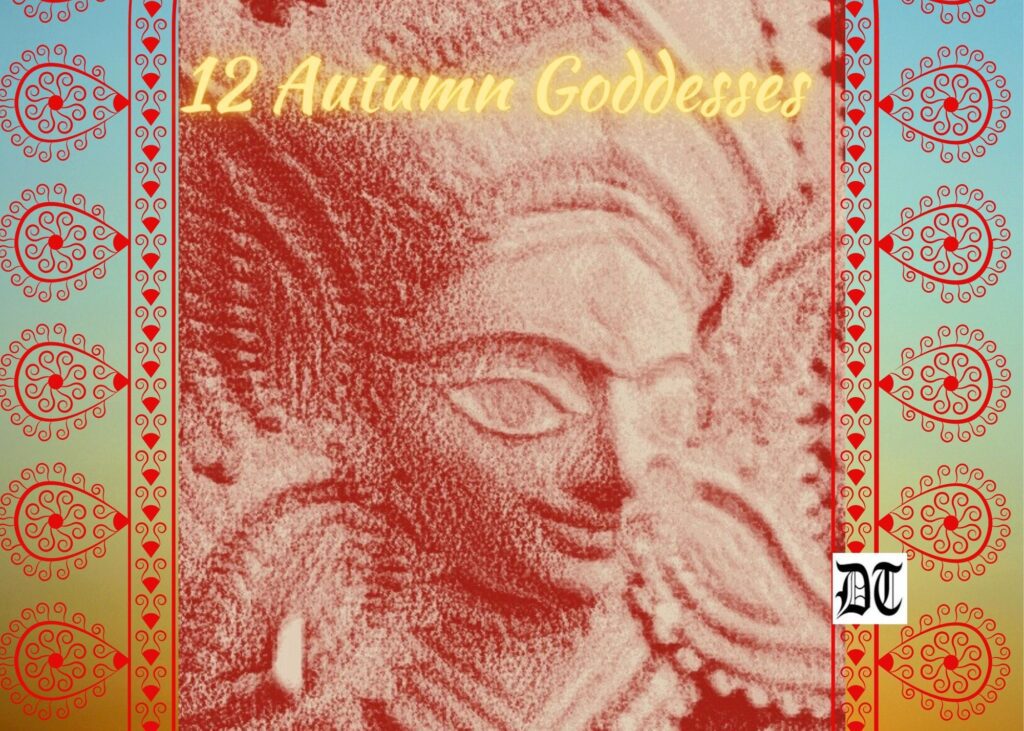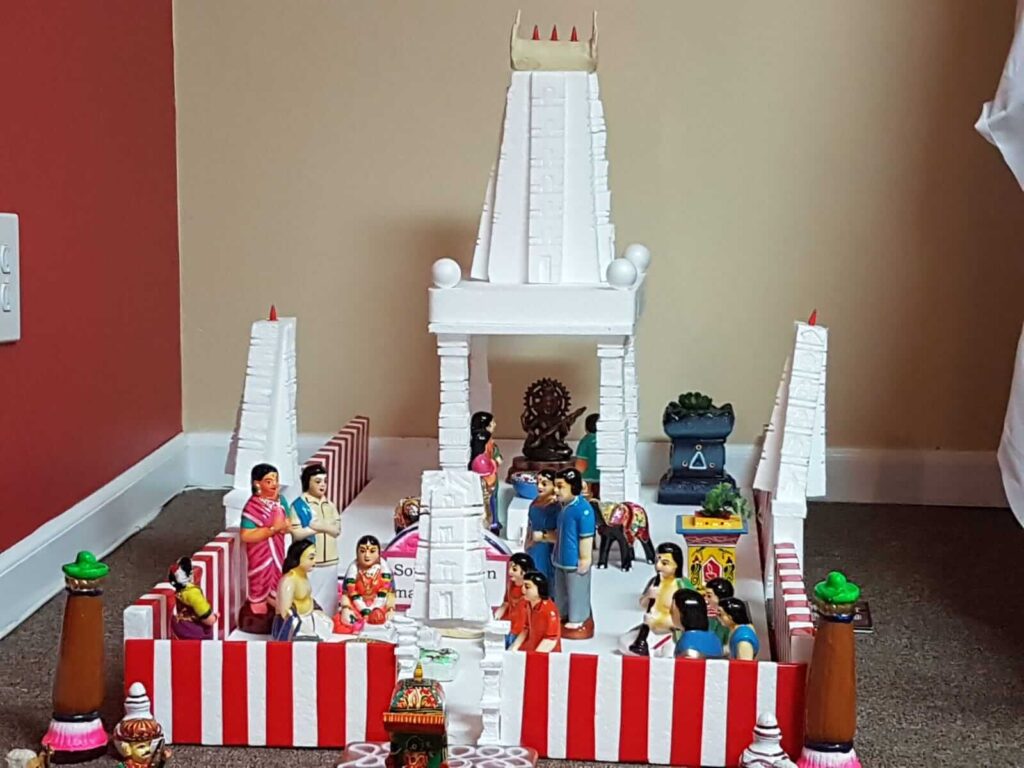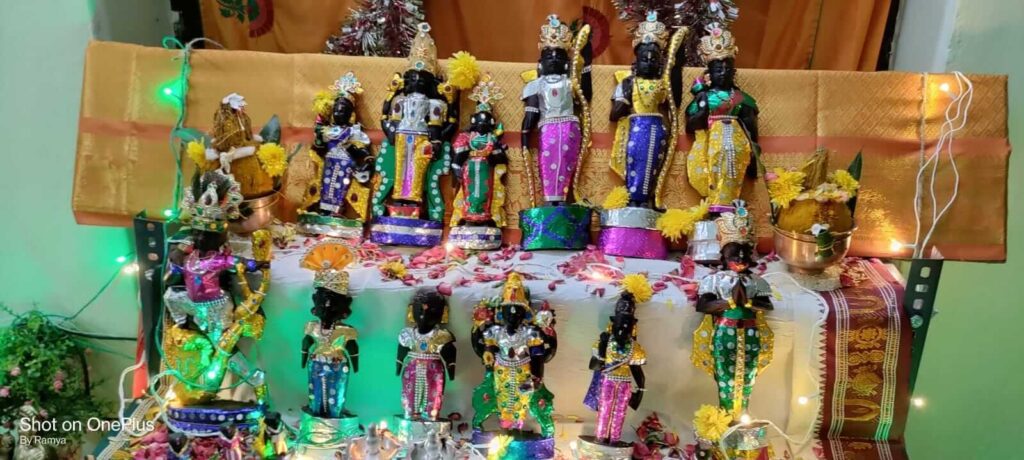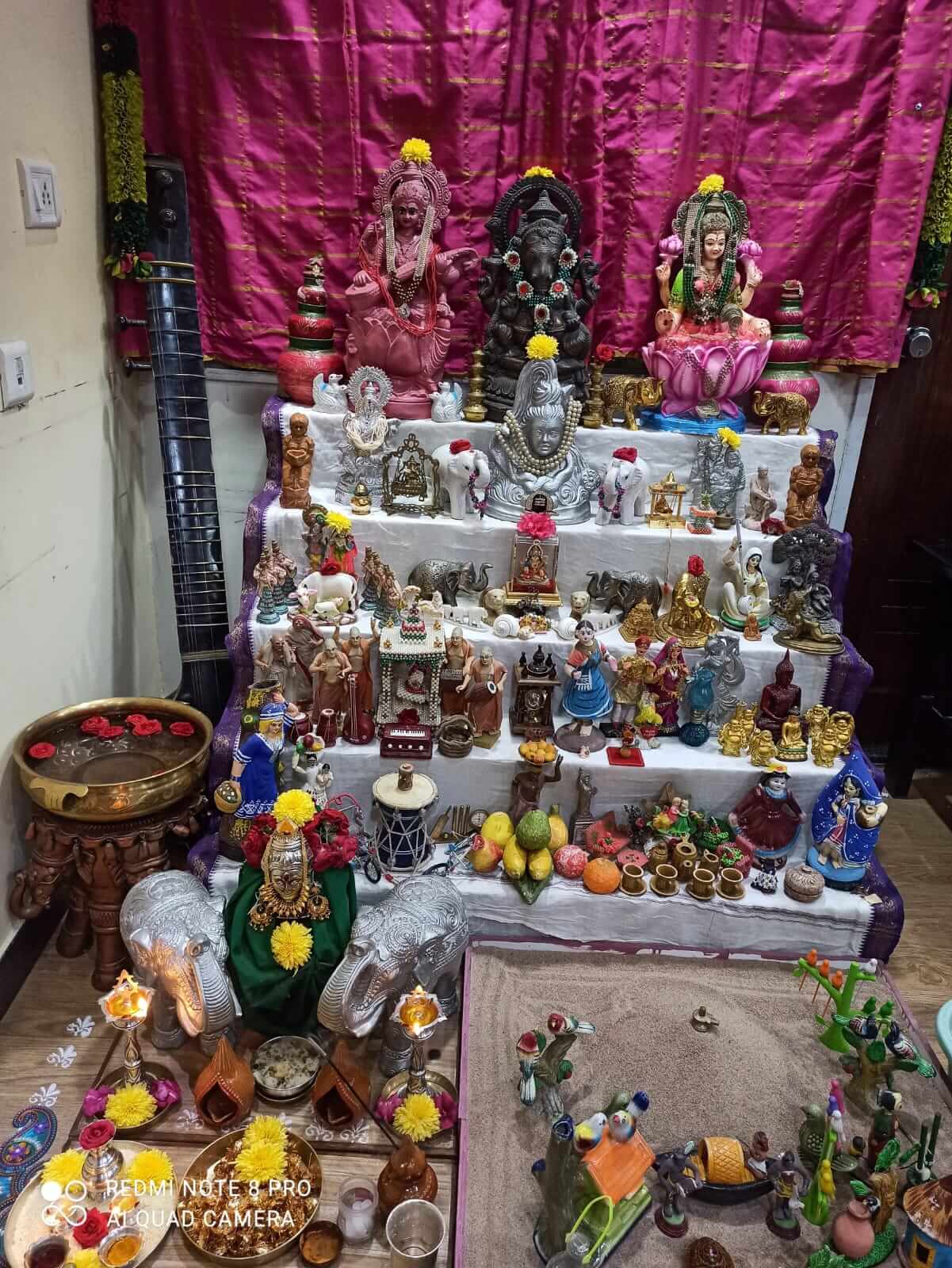Reading Time: 5 minutes
Goddess Saraswati is a patroness of knowledge and fine arts. Rupa tells us about Navratri celebrations in South India, where the nine manifested forms differ from that of North India. Saraswati, a form of Durga, states Rupa in an exclusive Special Feature for Different Truths.

Durga Puja, Durgotsava, in the Indian subcontinent, reveres and pays homage to the Hindu warrior goddess Durga. She is celebrated for her victory over the evil demon Mahisasur. It is a widely celebrated festival in West Bengal, Bihar, Assam, and Odisha. It is believed that the last day of Navaratri goddess Durga appears to be Maha Saraswati.
In Hinduism, feminine power holds great significance. There’s a distinct division that only worships the female form of the Supreme force that governs the entire universe, called Shaktism or Sakta Parampara (tradition). During Navaratri, Navdurga, as nine forms of Goddess Parvati, is worshipped and considered the life phase of Goddess Parvati, supreme power among all Goddesses. These nine nights are dedicated to the Lakshmi, Durga and Saraswati worshipped as consorts of Lord Brahma (the creator), Lord Vishnu (the protector) and Lord Shiva (the destroyer), respectively.
However, the Goddess of learning and knowledge, Saraswati, is the most significant in South Indian traditions, revered as the patroness of knowledge, music, art, speech, wisdom and learning in Hinduism. Her name translates loosely as “She who helps to realise the essence of self” or “She who reconciles the essence (of Parabrahman) with one’s self.”
In Buddhist iconography, Saraswati is considered the consort of Manjushri.
Interestingly in the eastern parts of India, Saraswati is worshipped as a daughter of Lord Shiva and Maa Durga. Lakshmi, Ganesha and Karthikeya are her siblings. In Buddhist iconography, Saraswati is considered the consort of Manjushri.

Most Indians consider Goddess Saraswati as the consort of the creator Brahma. She is attired in white, symbolising Satva (serenity), hailed as the Goddess of learning, fine arts, and music.
The pictorial depiction of the Goddess shows her with four hands symbolically mirroring her husband Brahma’s four heads, representing manas (mind, sense), buddhi (intellect, reasoning), Chitta (imagination, creativity), and ahamkāra (self-consciousness, ego).
Her four hands hold items with profound symbolic meaning –
-A Pustaka (book or script) symbolises the Vedas representing the universal, divine, eternal, and true knowledge, all learning
-A mala (rosary, garland) of crystals, representing the power of meditation, inner reflection, and spirituality.
-A water pot represents the purifying power to separate right from wrong, the clean from the unclean, and essence from the inessential. In some texts, the pot of water symbolises soma – the drink that liberates and leads to knowledge.
-A musical instrument (Veena) represents all creative arts and sciences, and her holding it symbolises expressing knowledge that creates harmony. Saraswati is also associated with anurāga, the love for and rhythm of music, representing all emotions and feelings expressed in speech or music.
Goddess Saraswati is worshipped to attain knowledge and wisdom, and her qualities can be imbibed to remove ignorance and darkness from this human life belief.
Goddess Saraswati is worshipped to attain knowledge and wisdom, and her qualities can be imbibed to remove ignorance and darkness from this human life belief. Moreover, her vehicle, Swan, is believed to possess the power to distinguish between “good vs evil”. When the bird is offered a mixture of milk and water, it drinks the milk alone.
On a holy day consecrated to Saraswati, musical instruments in the house are cleansed, placed on an altar, and devotedly worshipped, these being the abode of this Goddess. Besides, on that day, Ayudha Puja is also celebrated to worship implements used for livelihood. A conscious effort to see the divine in the tools and objects of use each day helps one to see one’s work as an offering to God. It allows one to maintain constant remembrance of the divine. This is an expression of gratitude to God for helping one to fulfil one’s duties.
During this period, a child (between the ages of two and six) is initiated into learning or ‘Vidhyarambam’. As part of the ritual, children are made to write the alphabet on rice or sand.
In south Indian states like Andhra Pradesh, Telangana, Tamilnadu, Kerala, and Karnataka, women adorn fragrant jasmine (mogra) in braids or buns during these holy nine days, offering to visit women and girls as well.
A collection of dolls often passed down from previous generations are arranged on steps created for a dazzling display.
A collection of dolls often passed down from previous generations are arranged on steps created for a dazzling display called Bommala Koluvu, Golu, Kolu. It consists of a makeshift staircase on which the dolls are placed aesthetically. They may depict themes of choice like environment, space, mythology, etc.

Many Telangana homes celebrate it as Batukamma Panduga; some follow this tradition in the erstwhile and present Andhra too. In addition to the doll display, women make a floral stack with seasonal flowers called Batukamma, which is worshipped for nine days, then set afloat in a community water body.
Karnataka follows Naada Habba – celebrating it like it was done in 1610 during the Vijayanagara dynasty with elephant processions on the road.
In Kerala, the devotees celebrate the art of learning during Navratri. In the last three days, they place books and musical instruments near the idol of Saraswati and perform the puja. On the last day, they take the books for reading.
Tamilians celebrate Navratri by worshipping Durga, Saraswati, and Lakshmi for three days each.
Tamilians celebrate Navratri by worshipping Durga, Saraswati, and Lakshmi for three days each. Their celebrations include the decoration of the Kolu, a captivating 9-step staircase display. Each step is a representation of the nine-day festival. The stairs are adorned with miniature gods and goddesses inherited by the devotees as heirlooms from ancestors and forefathers.
Saraswati Puja is also celebrated as Sharadotsava, Vasant Panchami in many states when Devi is adorned in yellow to represent spring, harvest, and new life, and people revel in yellow clothing and food items in yellow or rice made of saffron yellow.
She is worshipped in East Asian countries like Japan, Cambodia, Bhutan, Thailand, and Myanmar.
It is believed that chanting the Saraswati mantra 64 times every morning and evening for 21 consecutive days will enlighten students, especially those who are disinterested in learning.
सरस्वति नमस्तुभ्यं वरदे कामरूपिणि ।
विद्यारम्भं करिष्यामि सिद्धिर्भवतु मे सदा ॥
Sarasvati Namastubhyam Varade Kaama-Ruupinni |
Vidya[a-A]arambham Karissyaami Siddhir-Bhavatu Me Sadaa ||
Meaning:
1: Salutations to Devi Saraswati, Who is the giver of Boons and fulfiller of Wishes,
2: O Devi, when I begin my Studies, Please bestow on me the capacity of Right Understanding, always.
Photos sourced by the author.















Beautifully written. Loved that you went beyond the man made borders and included the various ways in which the goddess is worshipped.🙏👌🏽